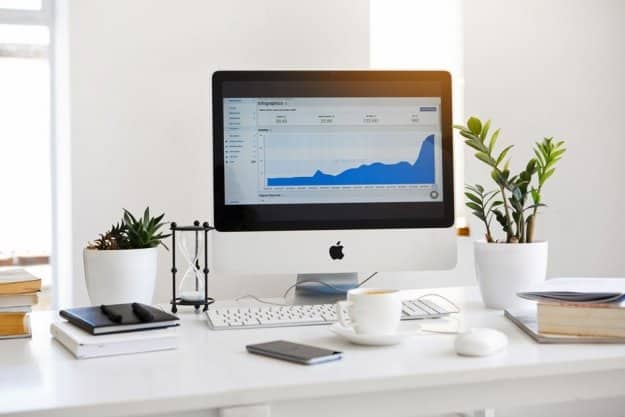
Efficiency and culture are two factors workplaces strive to improve as they go hand-in-hand.
When employees enjoy coming in, then they will be more efficient and determined to produce high-quality work.Not sure how to make your work environment more productive?
We’ve got you covered. Here are seven practical ways to improve efficiency in the workplace.
1. Allow Flexible Hours
You’re either a night owl or early bird and the same goes with your employees.
Flexible work hours let employees work when they’re most productive and when they’ll stay focused on work-related tasks.Also, giving your employees the freedom to choose their hours will make them happier. You could consider making your team remote or offer employees more work-from-home days.A study shows that 93% of managers report employees are more productive when they can choose when and how to work.
If you’re worried that home productivity is dipping, you can ask employees to use a time tracking tool like Time Doctor.
2. Update Your Office
The key to improving efficiency in the workplace is to update your office and the technology you use.Look around the office and see what needs revamping. Ask employees to share their feedback on the current environment. Not only will it improve engagement but it also ensures your employees are happy.Make the workplace more comfortable by adding plants, candles, or whatever pictures employees like to surround themselves with.
A study has shown that plants alone can improve work productivity by 15%.
Updating office computers with the most efficient software will increase productivity as computer speed is paramount.
Also, check out the office furniture. Are the chairs comfortable enough? If not, it can leave your employees feeling irritable and in discomfort. Another way of improving work efficiency is the lighting.
Bad lighting makes it difficult to stay focused so you must get the right balance of natural light by investing in window blinds. This lets you control the amount of light that comes into the room and prevents any outside distractions.
3. Set Clear and Achievable Goals
Improving efficiency at work means setting goals with your employees.
When everyone has clear, tangible goals to work towards, they can prioritize what goals to focus on.
This also shows that you value your employees’ contributions. Once they understand that, employees will have a stronger connection to their work.Start by creating wider goals for the business and once established, all employees should work together to reach these targets.For example, if you want to improve customer engagement on the company’s Instagram, ask an employee to focus on creating high-quality content to increase the company’s followers.
4. Encourage Team Building
Work efficiency improves when employees communicate better with each other.
Team building activities help employees work together on projects and lets different departments improve their flow of information.Also, remember that employee physical and mental health plays a vital role in the success of any company. Not only do healthy workers result in fewer sick days but it keeps employees motivated and productive when they’re feeling their best.
Another way to encourage team building is by introducing ID photo badges.
You can feature each person’s name, position, and photo so your employees feel part of a team. Ask your employees to browse styles of lanyards to add their personal touch.
5. Create a Happy Work Environment
If you’re dedicated to improving efficiency, create a positive workplace environment.
Employees happy at work are more efficient with their time and will produce better work. For example, let employees speak to one another. Remember, we’re adults, and employees should have the freedom to discuss work or personal matters with their coworkers. Also reward employees for their good work with extra vacation days, bonuses, and in-person congratulations to boost morale. Further, encourage employees to take a coffee break or a walk to get away from their desk.
6. Find Ways to Automate Your Workplace
Research shows that multitasking reduces productivity as it interferes with certain types of brain activity.
Scientists suggest working on one task at a time rather than trying to complete many tasks at once. It’s tempting to ask employees to monitor small jobs like social media but it’s better to use automation.
For example, automating your social media campaigns and email marketing services will let your employees focus on more important tasks. Tools like Agora Pulse automate your social media in a hassle-free way.
7. Cut Down Meetings
U.S. companies spend over $35 billion on meetings every year.
Decide whether your company has too many as you can waste time and money while affecting your employees’ happiness.Instead, use project management tools to reduce an excessive number of meetings. Slack, Asana, and Basecamp are great communication tools that are useful if you use remote workers.If you need face-to-face meetings, pick up coffee and pastries for a quick morning briefing or take everyone out for coffee. A personal touch will make your employees far more invested in the workplace’s current affairs.
How Will You Improve Efficiency in the Workplace?
Improving efficiency in the workplace is a daunting task but it is possible.
There are many small adjustments you can make to ensure that employees are comfortable and are looked after. If you’re not sure which step to take first, create a box in a visible place and ask employees to anonymously write improvements they’d like to see. Once you meet their demands, work productivity will improve. Good luck!Did you find this article helpful? Take a look around for more tips on improving your business.
The post 7 Practical Ways to Improve Efficiency in the Workplace appeared first on Mike Gingerich.
Read more: mikegingerich.com









